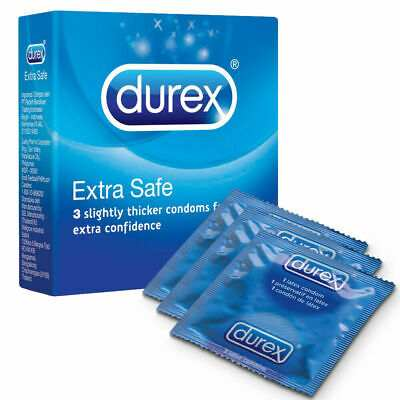
 Instagram
Instagram
Sexually Transmitted Infections (STI): Definition, Cause, Types, Symptoms and Treatment


Related products
Sexually Transmitted Infections (STI) Overview
Sexually Transmitted Infections, often abbreviated as STIs, represent a vast group of infections primarily transmitted through sexual contact. Formerly known as venereal disease and frequently interchanged with Sexually Transmitted Diseases (STDs), this specific category of diseases is typically caused by viruses, bacteria, or parasites that pass from one person to another during sexual activity.
There are numerous types of sexually transmitted infections varying in symptomatology and severity. Notorious examples include Chlamydia, Gonorrhea, Human Papillomavirus (HPV), Herpes simplex virus type 1 & Type 2 (HSV-1 & HSV-2), Syphilis, and HIV/AIDs.
Chlamydia symptoms common in men encompass a burning sensation when urinating and penile discharge, while women might experience abnormal vaginal discharge or a burning sensation when urinating. If untreated, it leads to severe complications such as pelvic inflammatory disease for women or infertility for both genders.
Gonorrhoea shares several signs with chlamydia: painful sensations during urination paired with eye-catching discharges from the vagina or penis. These pathogens have the potential to infiltrate areas like the rectum producing discomforting symptoms like anal itching and soreness accompanied by bloody stools.
Sadly enough, due substantial stigma surrounding sexually transmitted infections, many individuals shy away from discussing their sexual health, leading to underreporting and delayed treatment. Therefore, noticeable STD symptoms warrant immediate medical attention.
Undergoing a comprehensive sexuality test proves critical in identifying STIs early enough for effective management. Tests involve collecting samples such as blood, urine, or swabs from the genital area, which are then analysed in accredited laboratories for accurate diagnosis.
Clinical manifestations of sexually transmitted diseases like Chlamydia or Gonorrhea subside over time, but the infection remains present, thereby promoting its spread unknowingly among partners. Consequently, robust STD testing plays an essential role in curbing transmission rates and averting potential complications associated with untreated STIs
Treatment modalities available majorly include antiviral treatments reducing the activity of viral-causing agents, e.g., herpes simplex virus. At the same time, antibacterial drugs annihilate bacterial pathogens causing common infections such as syphilis, chlamydia, and gonorrhoea alongside preventive vaccines crucial against some HPV types.
Luckily prevention strategies abound, commencing with education on safe sex practices, including consistent, correct condom use coupled with regular checkups regardless of perceptible symptoms, equating key stepping stones towards eradicating a desirable venereal disease-free world.
Therefore, every responsible adult must embrace regular screening tests for these sexual disorders while maintaining an open and honest dialogue about their sexual health. The stigma surrounding these conditions ought to be outrightly addressed to bolster early detection hence prompt initiation of STD treatment.
Furthermore, partner notification plays a pivotal role in controlling the spread of STIs. Notification aids individuals unknowingly exposed to seek immediate testing alongside the initiation of necessary medical interventions.
As advancements continue being made within the healthcare sector, including the introduction of newer diagnostic tests like advanced molecular techniques plus the discovery of highly potent medications, the management of sexually transmitted infections has been revolutionised, promising fewer complications if diagnosed promptly and treated effectively.
What are Sexually Transmitted Infections (STI)?
Sexually Transmitted Infections (STIs), often known as Sexually Transmitted Diseases (STDs), are infections transmitted from one individual to another primarily through sexual contact. These disorders encompass a multitude of infectious agents, including bacteria, viruses, and parasites that exploit intimate physical contact for their transmission.
In the medical community, "sexually transmitted infection" is an umbrella term that encapsulates various conditions linked to but not limited to, vaginal sex, oral sex, or anal sex between partners. Prominent examples include Chlamydia trachomatis causing Chlamydial infections; Neisseria gonorrhoeae causing Gonorrhea; Human immunodeficiency virus, responsible for AIDS, among other organisms like Treponema pallidum leading to syphilis.
As per numerous studies endorsed by the World Health Organization prevalence of sexually transmitted diseases remains significantly high globally, with millions of new cases reported annually despite the availability of prevention measures, diagnostic tests, along effective treatments of the majority of these ailments.
Though symptoms vary depending on specific causative agents, most share common signs such as pain during intercourse, urination, unusual sores, and rashes in the discharged genital area. A noteworthy large portion of infected individuals neither exhibit visible signs nor feel unwell hence termed asymptomatic, making disease control even more challenging, particularly in resource-limited settings.
Understanding STI means recognising that anyone who engages in unprotected sexual activity remains at risk of contraction, which is due to the complex nature of these infections, which elicits unique challenges for prevention and control measures.
As multiple scientific data illustrate, sexually transmitted infections significantly burden global health. Their impact spans various sociodemographic groups touching on comprehensive public well-being, inclusive reproductive health, psychological well-being and socioeconomic standing.
In light of this knowledge, the importance of promoting regular testing and advocating safe sex practices cannot be overstated. Further strides need to be taken toward increasing the accessibility of affordable diagnostic tools alongside treatment options, particularly for underserved populations. Combating infectious diseases such as STIs requires concerted efforts among healthcare providers, researchers, and policymakers.
Through understanding what constitutes sexually transmitted infection, an informed, proactive approach is taken to reduce the possibility of transmission and mitigate adverse consequences associated with untreated or late-treated conditions. Thus imperative lay emphasis on treating symptoms and tackling the root cause of maintaining healthier, safer sexual behaviours.
What is the Cause of Sexually Transmitted Infection (STI)?
Sexually Transmitted Infections (STIs) arise from pathogens typically involving bacteria, viruses, and parasites. These culprits get passed on primarily through sexual contact - vaginal, anal, or oral intercourse. Remember that STI transmission is not exclusive to these activities but includes non-sexual routes such as mother-to-child during childbirth or breastfeeding.
Delving into sex facts reveals the core contributors to the propagation of this public health issue, unprotected sexual encounters with an infected partner being a principal cause for most sexually transmitted infections, including Chlamydia and Gonorrhoea.
Viruses like Herpes Simplex Virus (HSV-1 & HSV-2), Human Immunodeficiency Virus (HIV)- causative agent for AIDS-, and HPV are responsible for genital warts alongside certain types of cervical cancer thrive within body fluids such as semen, blood plus vaginal secretions hence successful transmission during intimate physical contact.
Bacterial infections represent another major category encompassing syphilis caused by Treponema pallidum bacterium, gonorrhea brought about by Neisseria gonorrhoeae organism, while chlamydial infection arises courtesy of Chlamydia trachomatis.
Parasitic infestations include trichomoniasis, resulting in a parasite called Trichomonas vaginalis, and Pubic Lice, commonly referred to as crabs, caused by minute parasitic insects settling on the hair of the pubic region.
Sexual contact without adequate protection is a leading cause, demonstrating the necessity for education surrounding comprehensive safer sex practices. Sharing needles among individuals using intravenous drugs provides another conduit for transmitting STIs, specifically Hepatitis B, C, alongside HIV/AIDS.
Evidence from large-scale epidemiological studies reveals a significant infection rate correlation with factors such as multiple sexual partners or having intercourse with someone whose sexual history isn't known, thereby increasing chances of exposure to potential pathogens.
Mother-to-child transmission has been documented in certain infections like Syphilis, Gonorrhoea HIV, where infected mothers pass on pathogens during childbirth, thus revealing the need for effective prenatal screening intervention strategies.
Regrettably, misconception abounds, implying only people exhibiting symptoms transmit STIs, whereas, in reality, countless cases of asymptomatic carriers exist, unknowingly spreading these diseases; hence regular sexuality tests become crucial regardless of the presence of noticeable STD symptoms.
Understanding the aforementioned causative mechanisms illuminates the path toward prevention and detection of sexually transmitted infections, ultimately safeguarding one's health plus that broader community.
What are the Different Types of Sexually Transmitted Infections (STIs)?
Sexually Transmitted Infections (STIs) represent many diseases primarily contracted through intimate sexual contact. These infections are an enormous global health concern affecting millions every year.
Chlamydia: Caused by Chlamydia trachomatis, it is one of the most common STIs globally. Symptoms often include painful urination and abnormal discharge in both men and women, although many exhibit no observable symptoms.
Gonorrhoea: Known as "The Clap," gonorrhoea originates from a bacterium called Neisseria gonorrhoeae with symptoms akin to those seen in chlamydia, including unusual genital discharges alongside uncomfortable sensations during urination.
Syphilis: A bacterial infection caused by Treponema pallidum which progresses across different stages, starting with sores on the genitals or mouth then followed by skin rashes before subsiding only to reemerge years later, damaging various body organs if left untreated.
Human Papillomavirus (HPV): HPVs encompass over 100 types, some causing warts, while high-risk strains lead to several cancers like cervical cancer, for example HPV 16 and 18.
HIV/AIDS: HIV stands for human immunodeficiency virus, which targets the immune system. Over time, potentially several years or even decades, it progresses into a more severe condition known as Acquired Immune Deficiency Syndrome (AIDS). Common symptoms include extreme fatigue, unexplained weight loss, and recurring night sweats.
Herpes Simplex Virus Type 1 & Type 2: While different strains of Herpes simplex virus cause both forms, type 1 primarily results in oral herpes causing sores on lips, while type 2 leads to genital herpes presenting with painful blisters or ulcers at the site of infection.
Trichomoniasis: Often referred to simply as "trich," this parasitic STI generated by Trichomonas vaginalis is frequently symptomless but, when present, manifests as itching plus burning sensations during urination, mainly among women.
Hepatitis B and C: Both are viral infections affecting liver function and posing serious health threats, including chronic liver disease up to cancer if untreated.
Mycoplasma Genitalium: A relatively unknown bacterium linked with urethritis in men along pelvic inflammatory diseases amongst females often misdiagnosed due to its similarity to chlamydia gonorrhoea.
Pubic Lice/Crabs: These are tiny parasitic insects that infest the hair in the pubic region resulting in itching and skin irritation, with visible lice or eggs often seen within public hairs.
How do Sexually Transmitted Infections Affect women?
Sexually Transmitted Infections (STIs), formerly known as venereal diseases, pose unique health challenges to women. Certain STIs have a more pronounced effect on females due in part to physiological differences and the often asymptomatic nature of these infections in their early stages.
Pelvic inflammatory disease (PID) is one severe consequence prevalent among women with untreated gonorrhoea or chlamydia. Resulting from bacterial inflammation, PID affects female reproductive organs such as the uterus, fallopian tubes, and ovaries which might lead to chronic pelvic pain and increased risk for ectopic pregnancies hence jeopardising fertility prospects.
Pregnant women infected with certain sexually transmitted diseases are in grave danger of passing those pathogens onto their unborn children causing life-threatening complications like low birth weight, premature delivery, and newborn death alongside neonatal eye infection case gonorrhoea.
Moreover, HPV notably causes high incidences of cervical cancer in females, thus linked to significantly higher morbidity mortality rates throughout the globe, contributing to annual cancer-related deaths worldwide. Early detection is keenly important through routine pap tests since it enables prompt initiation of treatment and reduces the likelihood of developing full-blown malignancies over time.
Women's vulnerability to contracting HIV is noticeably higher compared to male counterparts considering biological reasons, including greater surface area exposed during sex and potentially longer duration viral exposure coupled with statistically heightened probability of encountering a partner having pre-existing STI contributing to more potent transmission efficiency. Females living with HIV/AIDS face several unique health concerns, including increased susceptibility to certain infections and cancer.
Unfortunately, women, particularly those in the age bracket associated with reproductive years, deal with the brunt impact of sexually transmitted diseases (STDs), often struggling with emotional and psychological implications and diagnoses worsening overall quality of life.
Conclusively understanding these risks that venereal disease presents for women reiterates the vital need for preventive measures like safe sex practices, regular testing, vaccination against HPV, personalised care, especially during pregnancy, and treating curbing the spread of such infections.
What are the Common Symptoms of STIs?
Sexually Transmitted Infections (STIs) exhibit various apparent and subtle symptoms. Knowledge about these is critical to ensuring early detection and treatment initiation.
Unusual Discharge: Both men and women infected with STIs like chlamydia or gonorrhoea might notice an abnormal discharge from the penis or vagina respectively which often indicates the presence of bacterial infectionPain During Urination: A burning sensation while urinating denotes a common symptom of several sexually transmitted infections, including but not limited to Gonorrhoea, Chlamydia, alongside Trichomoniasis
Blisters, Sores, Or Rashes On The Genitals Or Mouth: These mark characteristic signs of herpes simplex virus as well as syphilis, usually appearing in the location where the pathogen entered the body
Itching Around Genital Area/Anus: Persistent itching surrounding the genital tract anus indicative of parasites such as trichomonas infestation crabs, signifying the need for an immediate consultation healthcare provider and effective intervention strategies incorporation
Abnormal Bleeding Women, especially those infected with chlamydia among other similar diseases, experience irregular menstrual bleeding besides spotting after intercourse, pointing to underlying sexual health concerns that ought to be addressed promptly to avoid further future complications
Painful Sexual Intercourse: Women often suffer physical discomfort during sex, typically linked to infections such as Trichomoniasis and Chlamydia. Prompt intervention aids in alleviating the discomfort besides curbing disease progression
Swollen Lymph Nodes: Some STIs like syphilis or HIV might cause lymph nodes, especially around the groyne area swell, serving as an early warning sign infection is present needing urgent medical attention
Fever: A sudden onset of high-temperature often accompanies stages of viral infections, including Herpes Simplex Virus (HSV), Human Papillomavirus (HPV), or Human Immunodeficiency Virus (HIV).
Lower Abdominal Pain: Experienced frequently among females associated with pelvic inflammatory disease resulting from untreated gonorrhoea chlamydial presence.
Loss of appetite, nausea fatigue is commonly seen in those infected with Hepatitis B, indicating the body's struggle to combat infecting agents, thus necessitating immediate consultation doctor initiation an appropriate treatment regimen against this serious liver ailment
However, it's important to remember that not all individuals with STIs exhibit perceptible symptoms; indeed, many are unaware of their status due to the asymptomatic nature of these diseases; hence continuous routine testing, regardless of overt signs, is crucial in maintaining optimal sexual health.

Who Typically Gets STIs?
Sexually Transmitted Infections (STIs) typically affect individuals across a broad spectrum of the population; however, certain demographic groups run a high risk.
Research shows that teenagers and young adults encompass the age group with the highest incidence of STI rates worldwide. According to the Centers for Disease Control and Prevention (CDC), nearly half of new STDs are among persons aged 15-24. Surprising figures emanate from several factors, including physiological hormonal changes during adolescence promoting sexual experimentation, coupled with inadequate knowledge of safe sex practices hence increasing their susceptibility.
Regarding male-female comparison, statistically, women are more likely to contract an STI than men due to biological factors rendering them more susceptible to such infections. Females possess greater vaginal surface area exposed to this paired possibility of micro-tears occurring during intercourse, which provides entry points for invaders coupled with the probability that the encounter partner already has a pre-existing infection, contributing to a higher acquisition rate.
Contrary to common belief, not only does penetrative sex lead transmission of sexually transmitted diseases, but oral sex too aids in propagation. These pathogens often arise, "Can you get an std from oral sex?" The answer is affirmative, as various germs causing syphilis, gonorrhoea, or herpes spread through mouth-to-genital contact, underscoring the need to use barrier methods like condoms and dental dams even when engaging in non-penetrative sexual activities towards reducing individual infection risk.
Furthermore, men who have sex with other men (MSM) comprise another demographic, particularly at high stakes for STDs. According to CDC data, MSM accounts for approximately 69% of primary and secondary Syphilis cases recorded, highlighting the need for increased awareness and regular testing within the community.
People with multiple sexual partners who disregard consistent condom use find themselves with higher probability of contracting STIs; more individuals who engage in unprotected sex have greater chances of exposure to these infectious pathogens.
Moreover, the population living HIV positive poses a significant threat to additional STI acquisition considering their compromised immune systems resulting in heightened susceptibility to opportunistic infections, including sexually transmitted diseases.
It becomes evident anyone engaged in any form of sexual activity is susceptible to acquiring an STI hence practising safe sex go a long way, mitigating individual infection risks and reducing overall disease propagation rates in society at large. In all circumstances, routine screenings are paramount regardless of perceived risk; early detection equates to prompt treatment preventing further health complications associated with unchecked venereal diseases.
Can STIs cause health Issues?
Yes, STIs lead to serious health issues when left untreated. The insidious nature of these infections implies that they might persist for lengthy periods undetected, thereby contributing to severe health complications.
Long-term impacts include pelvic inflammatory disease (PID) in women caused by untreated Chlamydia or Gonorrhea, notable symptomatic presentations such as abdominal pain leading to potentially life-threatening consequences like chronic pelvic pain and ectopic pregnancy, thus threatening fertility prospects.
Furthermore, certain strains of human papillomavirus (HPV) are known to cause cervical cancer -the leading cause of female mortality across the globe- alongside other types of cancers in men and women, including anal, throat, and penile vulvar.
HIV/AIDS, characterised as the most devastating sexually transmitted infection, ultimately compromises the immune system rendering the body susceptible to a wide array of opportunistic diseases. If not managed effectively, HIV progresses to the AIDS stage, associated with high morbidity mortality rates globally.
In males specifically, gonorrhoea chlamydia induced epididymitis, an inflammation tube backend testicle storing carrying sperm, causing extreme discomfort and eventual male infertility for untreatable prolonged periods.
Meanwhile, syphilis, if not detected promptly, cures early stages of progress, damaging major organ systems, nerves, the heart, even the brain, resulting in systemic failure and mental impairment.
Pregnant females infected-STIs risk transmitting pathogens to unborn children during delivery, heralding negative outcomes, neonatal death, low birth weight, and premature delivery. Congenital syphilis and neonatal herpes are severe infections newborns acquire at birth from infected mothers.
Hepatitis B manifests systemic influence on the liver triggering chronic inflammation leading to cirrhosis, end-stage liver disease, even hepatocellular carcinoma if not managed appropriately.
Can STIs be cured?
Yes, several Sexually Transmitted Infections are curable.
Bacterial infections such as Gonorrhea, Syphilis, and Chlamydia are effectively treatable with antibiotics. Upon diagnosis through appropriate tests, a health professional prescribes a specific antibiotic regimen to kill causative bacteria, thus eradicating the infection from the body.
Crucial understanding that even after successful treatment, it remains feasible for an individual to get re-infected in future sexual encounters highlights the importance of preventive measures, including but not limited to safe sex practices and vaccination applicable.
Conversely, viral infections like Human Papillomavirus (HPV), Herpes Simplex Virus (HSV), and Human Immunodeficiency virus (HIV) represent examples of STIs that at present do not have definitive cures; nevertheless, they remain manageable.
Antiretroviral therapy is available, reducing the activity of HIV within the body, while antiviral medications control the replication of herpes hence abetting episodic flare-ups and further transmission among partners. HPV is associated with cervical cancer, among other malignancies. Regular cervical screening testing helps early detection of pre-malignant lesions contributing to improved prognosis upon timely intervention initiation.
Parasitic STIs such as trichomoniasis and pubic lice (crabs) are too curable with medications designed to kill the specific parasite causing the infection. Partners need to get treated simultaneously to not re-infect each other post-treatment completion.
Despite advancements made within the field of medical science leading to enhancing diagnostic accuracy alongside the adaptability of various treatments, the relationship between sexually transmitted diseases and cure is nuanced. While some infections are cured entirely through prompt, effective therapeutic interventions, others remain chronic, thereby necessitating ongoing management control of disease progression to enhance the quality of life of affected individuals.
Remember that prevention remains key to controlling the spread of STIs; hence importance cannot be overemphasised. Encouraging regular testing regardless of the presence or absence of symptoms, educating the masses about safe sex practices advocating open, honest discussions about sexual health among intimate partners are crucial steps toward achieving world-free venereal diseases.
What is the Treatment for Sexually Transmitted Infections?
Treatment for Sexually Transmitted Infections hinges on the type of infecting agent - bacterial, viral, or parasitic.
Prescription medications are the primary line of defence against STIs. Antibiotics are effective treatment modalities against bacterial infections such as Chlamydia, Gonorrhea, and Syphilis if administered early by qualified healthcare professionals with a unique medical history and individual patient status. Administering these drugs constitutes the only safe way to cure several venereal diseases.
Viral sexually transmitted infections, including HIV/AIDS, Herpes simplex virus (HSV), and Human Papillomavirus (HPV), have no definitive cures hitherto; nevertheless, prescribed antiviral therapies help manage symptoms considerably well besides delaying disease progression and improving the overall quality of life.
Moreover, parasites causing trichomoniasis are effectively annihilated through the administration of metronidazole, tinidazole under the direct supervision physician, assuring optimal recovery outcome.
Consequences of not treating sexually-transmitted diseases early encompass potential chronic health issues, some of which might be fatal depending on the severity case at hand. For instance, untreated gonorrhoea chlamydia results in pelvic inflammatory disease women leading subsequently to ectopic pregnancies and infertility). Hepatitis B C, ignored, enhances the likelihood of developing cirrhosis hepatocellular carcinoma over time.
Ignoring initial manifestations, syphilis allows bacteria to spread throughout the body culminating in complications like blindness, mental disorders, and cardiovascular problems. In HIV/AIDS, without early detection and immediate initiation of antiretroviral therapy (ART), the immune system progressively weakens, leaving the body vulnerable to opportunistic infections, ultimately leading to death.
Undiagnosed or untreated STIs might increase one's susceptibility to contracting other venereal diseases, including enhancing transmission efficiency of already existing ones, thereby propagating endless cycle spread infection within the population.
Moreover, the emotional and psychological toll of being diagnosed with late-stage sexually transmitted disease cannot be underscored enough. It includes societal stigma associated with delayed treatment, an important factor when discussing the overall impact of an individual’s quality of life.
Thus individuals must engage in regular STI screenings as part of a comprehensive sexual health plan. The approach facilitates early identification of these conditions and allows prompt commencement of suitable medical intervention strategies averting severe consequences lacking an earlier point in time.
How long does the Sexually Transmitted Infection heal?
The timeframe for healing from a Sexually Transmitted Infection (STI) primarily depends on the type of infection and when it was diagnosed. STIs caused by bacteria, including Chlamydia or Gonorrhea, usually require around two weeks to clear following initiation appropriate antibiotic treatment regimen.
Syphilis, another sexually transmitted bacterial disease, has a longer healing timeline given its three distinct stages of progression over the years. Nonetheless, early detection and timely therapeutic intervention results in successful elimination within a few months.
On the other hand, viral infections such as Herpes Simplex Virus and Human Papilloma Virus HIV present more complex scenarios. Considering their nature, these pathogens persist in the host body indefinitely; however, symptom management is achievable through antiviral medications. Regular intake of drugs keeps the virus in check, preventing the severity of outbreaks and improving the overall quality of life.
Likewise, Hepatitis B, albeit incurable, managed effectively with antivirals that control viral replication hence minimising the risk of severe liver complications. However, cases of acute hepatitis resolve spontaneously without a medical intervention period ranging from six months
Chronic parasitic STIs like Trichomoniasis generally clear up after a week of standard medication therapy. Nevertheless, reinfection is common; thus, partners must be treated concurrently to ensure the absence of reservoir infection.
In sum, the duration required to completely heal STIs varies depending on the effectiveness of nature's causative pathogen point diagnosis and selected treatment approach. Therefore, regular testing and adherence to prescribed therapies remain paramount in controlling and managing the spread of venereal diseases.
Adherence to the prescribed treatment plan, even after symptoms have subsided, proves essential in ensuring complete clearance of the infection. Remember that initial relief from discomfort does not equate to full recovery – completing an antibiotic or antiviral course provides assurance pathogens have effectively neutralised with minimal likelihood of recurrence.
In addition, wellness recovering STI involves practising safe sex, minimising the risk of exposure reinfection intentional patience regarding resuming sexual activity post-diagnosis. Early re-engagement increases the chances of inadequate healing hence the possibility of transmitting the disease to others.
How do I get tested for STI?
Getting tested for Sexually Transmitted Infections (STIs) represents a critical step toward maintaining optimal sexual health. It involves several modalities dictated by the type of infection suspected or the individual's symptoms.
Before testing, a thorough consultation with a healthcare provider occurs where they inquire about recent sexual activity and any signs experienced lately that might indicate an STI.
Following this dialogue session, actual tests get performed based on the patient’s symptomatology or their potential exposure risk:
Urine Test: Essentially employed when screening for bacterial infections like Gonorrhea ChlamydiaOnce lab results are back, a follow-up appointment arranged by the healthcare provider offers an opportunity to review test outcomes. If positive results indicate the presence of STI pathogens, relevant treatment options get discussed immediately, with further advice on partner notification for their immediate testing and initiation of therapy.
A vital point worth noting is that different sexually transmitted infections have varying window periods - the time between exposure infection when it becomes detectable through available tests. Therefore retesting might be necessary in certain situations.
What are the long-term health consequences of untreated STIs?
Untreated Sexually Transmitted Infections (STIs) pose a significant risk to long-term health. Following are some of the severe consequences if these conditions remain unaddressed:
Infertility: Chlamydia and Gonorrhea, when untreated in women, lead to Pelvic Inflammatory Disease (PID). It subsequently damages the fallopian tubes escalating the risk of tubal factor infertility. Additionally, men gonorrhoea results in a potential obstruction of ejaculatory ducts, therefore, interfering with normal sperm flow and causing reduced fertility
Cancers: Persistent infection Human Papillomavirus is responsible for most cervical cancer cases worldwide. Moreover, it contributes significantly to other malignancies, including penile, anal, and oropharyngeal types. Certain strains of Hepatitis B & C viruses have been implicated in liver cancers.
Neurological Cardiovascular Damage: Untreated syphilis instance progresses tertiary stage producing serious complications such as neurosyphilis characterised by mental impairment, tremors, loss of coordination end, up damaging heart blood vessels named cardiovascular syphilis
HIV/AIDS Progression Potentiation: The presence of untreated STI provides an optimal environment for HIV transmission. Therefore having an active STI consequently increases the chance of getting infected with HIV; those already living disease accelerates the progression of AIDS owing to cumulative weakening immune functions caused by concurrent infections
Pregnancy Complications: STIs like Chlamydia, Gonorrhea, or Syphilis, when untreated among pregnant women, bear considerable harm to both mother and baby. They've been associated with preterm labour, premature rupture of membranes, and low birth weight infants. Moreover, complications arise post-delivery, encompassing neonatal infections or congenital abnormalities, for example, neurologic issues and cognitive developmental challenges occasioned by congenital syphilis
Chronic Hepatitis & Liver Cirrhosis: Undiagnosed hepatitis B C inflicts substantial damage liver over time, causing irreversible changes such as cirrhosis which is severe scarring that hampers normal liver function
Therefore regular testing is vital for mitigating these dire consequences. It serves as an early warning system and enables the commencement of appropriate treatment regimen early enough to thwart the potential progression of advanced disease stages. After all, prevention is always better than cure, especially in Sexually Transmitted Infections.
Do Pap Screening Detect STIs?
No, a Pap screening does not directly detect sexually transmitted infections.
A Pap smear – or cervical cytology test - is performed to screen for precancerous transformations in the cervix that might result in cervical cancer if left unchecked over time. It involves collecting cells from the cervix, which are then microscopically examined for changes indicative of abnormal growths potentially leading to malignant transformation.
However, while it isn’t primarily designed as an STI diagnostic tool, a pap screening plays a crucial role in health care practitioners identifying certain high-risk human papillomavirus (HPV) types known to cause most cervical cancers in women.
Although there is some overlap between HPV detection and PAP testing, it's important to note two serve distinctly different functions. It hence must be carried out complementarity, achieving comprehensive sexual health checkups.
Therefore, every woman must undergo routine sex-specific examinations combining regular PAP smears and recommended full spectrum sexuality tests, prompt identification of sexually transmitted diseases, avoidance of detrimental consequences associated with missed early diagnosis and lack thereof, and timely intervention.
Is the HPV Test Necessary?
Yes, an HPV test is indeed necessary. There exist over 100 types of Human Papillomavirus (HPV), few of which specifically pose a high risk for cervical cancer development in females.
It’s been established beyond reasonable doubt that persistent infection with high-risk HPV strains like HPV-16 or -18 is a key causal factor for most cervical cancers; hence early detection through regular tests significantly reduces disease progression.
The necessity arises considering most individuals infected with the virus display no symptoms till advanced stages; thus, routine testing provides an avenue to catch and treat infections before they morph into serious complications such as cervical dysplasia potentially developing into full-blown malignancies.
Certain guidelines even recommend women above the age bracket 30 years undergo a combined Pap smear plus HPV test every five years; known dual screening enables doctors to identify the presence of harmful viral subtypes and predict an individual's potential future cancer risks based on their current status, subsequently customising treatment plans according to these findings.
While it might sound daunting, remember one crucial fact: while having a high-risk strain doesn’t automatically guarantee the onset of incurable health ramifications, catching and managing its presence earlier ensures a far more favourable prognosis rate besides averting unwanted consequences associated with late-stage diagnosis.
How To Prevent Sexually Transmitted Infections (STIs)?
Preventing Sexually Transmitted Infections (STIs) requires concerted efforts to achieve optimal sexual health. Here are some methods essential in minimising the risk of contracting STIs.
Safe sex practices: Using condoms during every act of intercourse significantly reduces chances for pathogens transmission, helping prevent the majority of sexually transmitted infections, including HIV, syphilis, or gonorrhoeaGet Vaccinated: Receiving vaccines against Hepatitis B and HPV protects against these types of viral transmissions, remarkably reducing chances of developing complications such as liver cancer and cervical malignancies, respectively, over time
Regular Testing And Early Treatment: Undergoing routine STD tests enables early detection hence the initiation of timely treatment, limiting disease progression further spread among partners
Maintain a Monogamous Relationship: Having an exclusive relationship with one partner who is known to be free from any STI offers the best protection against venereal diseases since it eliminates risks linked to multiple sexual partnerships
Abstinence From Sexual Activity: Completely avoiding all forms of sexual activity is the surest way to prevent contraction. STI’s especially recommended for the younger populations not yet ready to manage responsibilities tied to active sex life
Communicate With Partners About Past History Of Any Venereal Disease – Open, honest conversations regarding experience allow informed decision-making around engaging in safer sex practices besides encouraging testing before becoming an intimate new partner
Don't Use Drugs Or Alcohol In Excess: Impaired judgement from excessive consumption often leads to risky sexual behaviours, including unprotected sex increasing the chances of contracting STIs
Avoid Douching: Women refrain from douching since it destroys good bacteria lining the vagina, exposing a greater risk of bacterial infections like Bacterial Vaginosis, which heightens susceptibility to other sexually transmitted diseases.
Use Dental Dams for Oral Sex: Latex or polyurethane sheets act as a barrier preventing the passage of infectious agents during oral activities, reducing transmission possibility significantly.
Seek Immediate Medical Attention: Noticing any abnormal symptoms related to STDs warrants prompt consultation healthcare provider, ensuring timely diagnosis initiation of appropriate treatment regimen ultimately interrupt disease progression and potential onward spread among partners
By proactively incorporating these preventive steps into one's life, individuals greatly reduce their risk of acquiring an STI and help contribute towards healthful living and relationships.
What is the Awareness about STIs and Safe Sex?
Awareness about STIs and Safe Sex is essential in controlling the spread of sexually transmitted diseases. Public health initiatives globally emphasise knowledge dissemination regarding STI prevention, safe sex practices, regular testing protocols, along with appropriation stigma reduction.
Understanding that unprotected sexual activities increase vulnerability towards contracting such infections calls for implementing consistent condom use as a primary safeguard against most sexually transmitted pathogens; an imperative aspect must be imparted among all individuals engaging in any form of sexual activity.
Sexual health is not just the absence of disease; it's about embracing a positive and respectful approach to sexuality and sexual relationships. It's understanding your own body, your desires, and your boundaries while also respecting those of your partner. Open and honest communication is at the core of sexual health as emphasised by Dr Ruth Westheimer, a renowned sex therapist and educator, about sexual health.
Education on common symptoms like unusual discharges, painful urination, and the appearance of sores or blisters around the genitals and mouth, alongside those discussed previously crucial, empowers the public to seek immediate consultation at slight suspicion of infection onset, thus enabling early detection and prompt treatment.
Moreover, awareness availability of different types of STD tests carried out depending on an individual's specific circumstances is known to eliminate the misconception one-size-fits-all approach and therefore encourage more members of society to undergo routine checks regardless of having not exhibited perceivable disease signs.
Sexuality education plays a pivotal role, especially among the younger demographic, equipping them with the necessary skills to responsibly manage their reproductive health, thereby decreasing the likelihood of risky behaviour indulgence, causing high transmission rates observed within the age group.
Emphasising societal responsibility disclosure of positive status partners equally significant to facilitate their urgent access to medical care if needed prevent unintentional propagation of venereal disease for unaware potential exposure risk.
Given the importance of these aspects, multiple stakeholders collaborate extensively to foster an overall population understanding of susceptibility to these diseases, prevention measures followed by ways of managing existing infections effectively.
Governmental bodies and non-government organisations launch awareness campaigns via different platforms such as social media, TV, and radio print media to deliver informative content to a wide audience demographic. Schools engage efforts through the incorporation of a comprehensive sex education curriculum that includes in-depth discussions about transmission risk factors, preventative steps, signs and symptoms of STIs, and how to attain testing treatment services.
Healthcare providers play an instrumental role in providing personalised counselling regarding safe sexual practices and the importance of regular screening strategies for dealing with positive diagnoses. Especially holding critical high-risk groups like commercial sex workers and individuals with multiple partners whose understanding of implications associated with contracting sexually transmitted diseases needs to be boosted.
Considering female susceptibility increased severity outcomes upon infection, they form the primary target group; these initiatives provision information concerning cervical cancer screening vaccination against HPV women's health clinics and community centres ensure reach wider populace aiding timely intervention and hence thwarting potential complications onset.
What research is Conducted about STIs and women's health?
Research into Sexually Transmitted Infections (STIs) and women's health has been extensively conducted over the years to comprehend their impacts while developing innovative prevention strategies and treatment interventions.
One line of research delves deeply into understanding biological factors predisposing women to a higher risk of contracting STIs compared to men, including but not limited to physiological differences and hormonal influences on immune responses. Numerous studies postulate that vaginal microflora plays a considerable role in susceptibility to various infections; hence, active explorations designing probiotic treatments targeting these microbial communities enhance resistance towards pathogens.
Comprehensive investigations hooking attention to the relationship between certain sexually transmitted diseases, particularly HPV development cervical cancer, such researchers strive to pinpoint the exact mechanisms through which the virus transforms normal cells into malignant subsequently leading to effective targeted therapies against this deadly consequence. In a similar light, the focus is drawn on exploring associations between HIV pregnancy complications and birth outcomes aids in improving maternal neonatal mortality rates worldwide.
Another significant area of interest elucidates socio-cultural aspects governing female vulnerability to STI transmission, aiming to identify contributing barriers to access to quality healthcare services alongside acknowledging the precedence of domestic violence and gender inequality fostering increased infection prevalence across the globe.
Behavioural scientific inquiries on sexual behaviours, partner communication contraceptive use decisions among varied populations, specifically younger cohorts, form yet another key segment of ongoing research activities seeking to design culturally appropriate educational campaigns targeting at-risk segments for preventing the dissemination of venereal disease.
Technological advancements have spurred innovative research directions, including developing novel diagnostic methodologies. Precision medicine bears immense potential in this realm, with studies underway to devise personalised treatment plans tailored according to the genetic makeup of individual patients, thereby promising better recovery outcomes and fewer side effects compared to conventional therapeutic approaches.
In terms of prevention, substantial work has gone into designing effective vaccines against certain STIs, such as HPV and Hepatitis B, demonstrating considerable success in curbing their incidence rates globally. Exploration continues for the discovery of potentially viable vaccine candidates for other widespread diseases, primarily HIV.
Efforts have been put forth to understand the psychological impact of STI diagnoses on women’s mental well-being, addressing common issues like stigma, anxiety, and depression often associated with these conditions. Research insights gathered aim to provide robust support systems fostering healthy coping mechanisms that impact individuals.
Can condoms prevent Sexually Transmitted Infections?
Yes, condoms significantly decrease the risk of contracting Sexually Transmitted Infections. Efficacy lies in the barrier functionality provided by a condom that prevents direct contact between genitalia, thus restricting pathogen transmission.
Medical professionals herald condoms as one of the most effective methods for reducing STI transmission during sexual intercourse when used correctly and consistently. Latex condoms offer substantial protection against many sexually transmitted infections like HIV, Gonorrhea, and Chlamydia, among others, due to their impermeability to microscopic pathogens.
However, it’s noteworthy to remember certain types of diseases, namely HPV herpes simplex virus transmitted not only through sexual penetration but skin-to-skin contact; hence there remains an incremental probability of getting infected despite the perfect utilisation barrier method; such areas not covered by condoms remain susceptible to infection.
Therefore while an essential tool safeguards employed to prevent the spread of venereal disease, other preventive measures are encouraged robustly, including regular testing since early detection paves the way for timely intervention vaccination where applicable, alongside maintaining open, honest conversation regarding sexual health within relationships promoting mutual respect, understanding necessary precautions, optimal health outcomes.
Can Medicine Sold on The Internet Treat STIs?
No, depending on medicines sold over the Internet for treating STIs is not advisable.
Despite numerous online platforms offering 'prescribed' medication allegedly aimed at curing various sexually transmitted infections (STIs), a broad spectrum of these lack verification by recognised health entities like the FDA, implying their safety efficacy remain uncertain.
A myriad of so-called treatments might be ineffective or, worse yet, potentially dangerous due to detrimental substances present alongside the increased risk of additional complications arising from self-medication attempts. It is important to consult a healthcare professional before starting any treatment regimen to ensure that the appropriate diagnosis is made and that drugs are prescribed properly to address the underlying ailment.
Moreover, purchasing prescription drugs without a thorough evaluation of a patient's medical history and current health condition often leads to incorrect dosage selection and inappropriate drug choice, thereby diminishing the likelihood of fruitful recovery and even possibly exacerbating existing symptoms.
Accredited physical pharmacies require prescriptions written by licensed healthcare providers, whereas many internet-based sellers exploit this loophole avoiding crucial steps leading to misuse and mismanagement of critical medications, particularly in the realm of Sexually Transmitted Diseases(STDs)
Online sales of counterfeit medicine are rampant across the globe, potentially obtaining fake ineffective harmful products high, putting individuals in a desperate search for serious peril.
Lastly, availing STD treatment via online sources eliminates necessary follow-up care, including essential evaluations, and monitor response therapy adjustments required dosages facilitating improvement in overall long-term prognosis. Thus the importance of seeking face-to-face consultation with qualified professionals cannot be overemphasised as it ensures the application of appropriate diagnostic tests and personal recommendations tailored to individual health circumstances besides quality treatment suggestions backed up by years of clinical practice and evidence.
The availability of online STI treatments fosters cultural self-diagnosis and encourages buying of potentially harmful products. Regular medical examination promotes a comprehensive understanding of one's body's overall wellness and assists in early intervention for any disorders manifested, thereby reducing long-term risk complications.
What is the relationship between STIs and HIV?
Sexually Transmitted Infections (STIs) and Human Immunodeficiency Virus (HIV) share a complex, interrelated epidemiology. Existing STIs significantly augment the risk of acquiring or transmitting HIV infection.
Bacterial or viral infections causing sores in the genital area, like herpes simplex virus, drastically increase susceptibility to HIV due creation of entry points for this immune system-targeting pathogen. More alarming remains the fact any inflammation associated with an untreated STI makes it easier for HIV infection to establish itself once exposure occurs
Additionally, co-infection cases where both an STI and HIV co-exist within the same individual serves alarmingly efficient mechanisms facilitating rapid spread among sexual partners since pathogens shed simultaneously during intercourse.
One distinguishing symptom observed in individuals who have recently contracted HIV is the appearance of tiny bumps, commonly called "HIV bumps," on the surface skin. These appear as red flat spots, and found anywhere on the body, frequently occur amongst other symptoms such as fever and swollen glands, signifying recent seroconversion, thus requiring immediate medical evaluation and treatment initiation.
Conclusively given the compelling relationship between sexually transmitted diseases and the increased likelihood of contracting the spreading human immunodeficiency virus underscores the necessity of early detection of proper management of these conditions through comprehensive testing provisions and effective treatments besides advocating robust public health education strategies geared toward reducing incidence transmission rates, ultimately achieving desirable disease-free societies.
What is the Difference between STIs and STDs?
Sexually Transmitted Infections (STIs) and Sexually Transmitted Diseases (STDs) are often used interchangeably. However, subtle differences exist between the two.
An STI refers to an infection caused by a pathogen -- such as a virus, bacteria, or parasite-- that enters the body primarily through sexual contact. An individual with an STI exhibits no apparent STD symptoms because it is in its initial stage, where conditions for disease development have just been set.
On the other hand, a sexually transmitted disease represents an advanced scenario where an infection has progressed into a more severe symptomatic condition hence the word "disease." Essentially every diagnosed STD started as an STI.
For instance, Chlamydia trachomatis might infect a person but doesn’t immediately cause any health problems, thus labelled “chlamydia infection.”However, when left untreated, progresses lead to complications like pelvic inflammatory disease in women classifying the state now being “chlamydia disease.”
Moreover, HIV presents a classic case illustrating the difference since exposure to infected blood, semen vaginal fluids result in human immunodeficiency viral entry, yet till specific thresholds reach the immune system compromised point causing AIDS does the transition from mere 'infection' full-blown 'disease' occurs.
These discrepancies hinge upon technicalities and medical jargon denoting different stages of the same general process, ultimately alluding to the health impact of sexual activity without proper preventive measures.
Regardless of definition nuances, fundamental understanding remains that STIs and STDs pose major public health concerns contributing to significant morbidity mortality rates, especially among young sexually active adults.
Early identification through routine screening, regardless of the presence or lack thereof of typical STD symptoms critical for effectively managing such infections and mitigating potential long-term detrimental effects. Safe sex practises vaccination opportunities against specific STIs like HPV offer additional protection alongside open, candid discussions regarding sexual well-being, ensuring a substantial reduction in disease transmission prevalence of sexually transmitted diseases within communities.






















 Rated Excellent by 26,523+ Reviews
Rated Excellent by 26,523+ Reviews